Red Ludwigia glandulosa is an aquarist’s favorite colorful plant. These amphibian plants are native to North American soil and easy to maintain. This article will address amphibious plants and how they survive in extremes. Introduction to Ludwigia glandulosa, their use in aquascapes, and how to care for ludwigia glandulosa are also points of this article. A comparison between emersed and submerged conditions is also part of the discussion.
Content Table
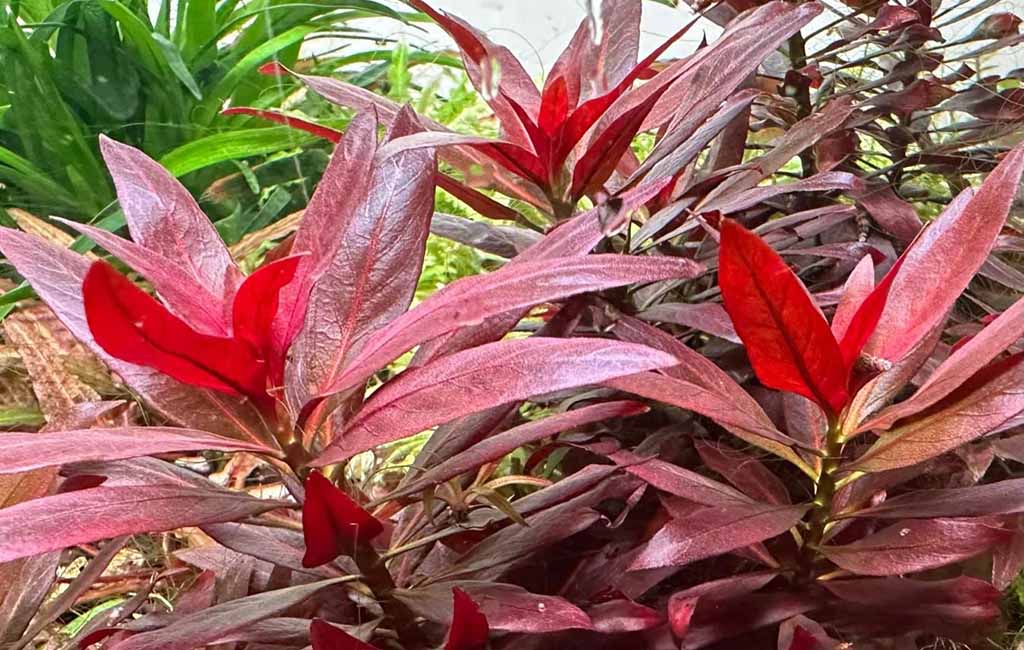
Ludwigia glandulosa
Amphibious Plant
Such plants that can live in both flooded and un-flooded conditions are known as amphibious plants. Usually, it’s hard for plants to survive in both conditions. However, these plants have a special ability to adapt to the changing physiology and morphology of contrasting conditions. Several reasons help them to survive in both conditions.
Root Plasticity
These plants can produce roots that help them survive in both conditions, i.e., root plasticity. In flooded conditions, they produce floating roots that intake nutrients from water. While in dry conditions, their roots go deep in the soil to gain the required nutrients.
Leaf Plasticity
Like the unique root system, these plants have a unique leaf behavior, i.e., leaf plasticity. In flooded conditions, their leave tends to be thinner and highly flexible as there is no chance of water loss. While in dry conditions, these plants develop thicker and rigid leaves. These leaves perform like aerobic plants.
Aerenchyma Tissues
These plants develop Aerenchyma tissues in anaerobic conditions. These tissues help them to intake the oxygen from the non-submerged parts and transfer it to submerged leaves and other parts.
Stomatal Regulation
These plants have a unique stomatal regulation. They open their stomata in dry conditions to perform photosynthesis. While in submerged conditions, they close their stomata to limit their respiration.
Nutrient Storage
This ability is not a shared characteristic of all amphibious plants. Some plants have tissues to store the water and other nutrients. They use them in dry periods.
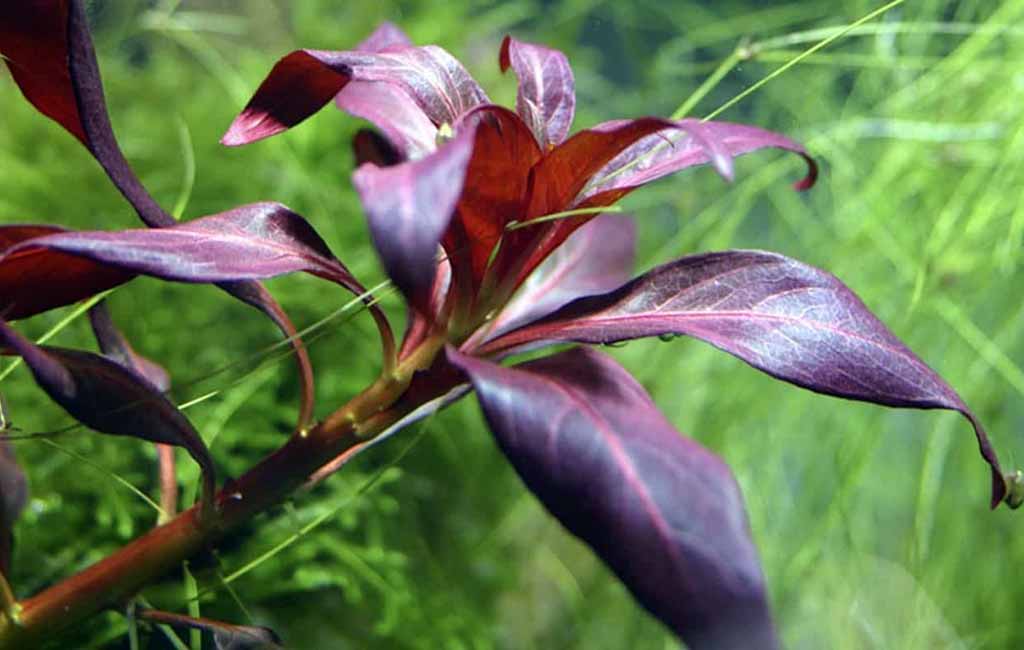
Care ludwigia glandulosa
Ludwigia Glandulosa
Ludwidia glandulosa is an herb that has oval to lance-shaped leaves with a deep red to burgundy coloration. This coloration adds a striking contrast to the green backdrop. With proper trimming, they grow upright and show bushy growth. Here are the features of this amphibious plant.
| Feature | Detail |
| Scientific Name | Ludwigia glandulosa Ludwigia peruensis |
| Common Name | Cylindricfruit primrose-willow |
| Habitat | Wetlands, marshes, ponds, and slow-moving water bodies |
| Distribution | It grows in wetlands and ditches at the roadside in southern states in North America. |
| Status | Threaten in Indiana Endangered in Maryland |
| Size | 12 – 40 cm high 5 – 12 cm wide |
| Growth conditions | Fully or partially submerged.
It grows well when phosphates and nitrates are present. |
| Leaf Arrangement | Grow opposite sides of plant stem in pairs |
| Growth rate | Grow slowly in anaerobic conditions and moderate in partially submerged conditions. |
| Water temperature | 64-82°F |
| pH range | 5.5–7.5 |
| General Hardness | 0 – 30°dGH |
| Lighting | 2 watt to 4 watt per gallon |
| CO2 requirement | Without CO2: grow slowly For medium growth supply +/-30ppm CO2 |
Growing Ludwigia Glandulosa in Partially and Fully Submerged Conditions
You can grow Ludwigia Glandulosa in fully or partially submerged conditions. However, there is a phenomenal difference between growth and other requirements in either condition. Here is the difference.
| Feature | Partially Submerged | Fully Submerged |
| Growth Rate | Medium | Slow |
| Leaves | Green, thick | Red to purple, thin |
| Light | Moderate to high | High |
| Supplemental CO2 | Not required | -/+30ppm |
| Stem | Rigid | Flexible |
| Flowering | Frequent small yellow flowers | On and off flowering |
| Nutrient Requirement | Less as it absorbs from both air and water | Frequent as it absorbs only water |
| Maintenance | Less maintenance | Higher maintenance |
Ludwigia Glandulosa Aquarium
Ludwigia glandulosa is a splendid aquarium plant. Usually, the aquarists who love to see some coloration in their tank use them as they turn red to purple under high light. Aquarists also love it as it requires low maintenance and has medium-level difficulty in growth.
Benefits of Ludwigia Glandulosa in Aquarium
Ludwigia glandulosa carries numerous benefits. Here are some of them.
- It helps to keep the aquarium water clean as it uptake nutrients, i.e., phosphates and nitrates, from water.
- It helps in breeding tanks, as its leaves are perfect for laying eggs.
- And provides a hiding spot for fish, fry, and invertebrates.
- It helps to overcome algae outbreaks in the tank as it uptakes nitrates from the water.
- It offers versatility in aquascaping due to its fully and partially submerged growth.
- And improves the tank oxygenation.
Role in Aquascaping
Aquarists love Ludwigia Glandulosa due to its coloration and other aquascaping aspects. Here are some of its role in aquascaping.
| Provides a contrasting coloration when grown with green plants. | Grow taller and show red to purple coloration with a unique leaf structure. These things help to make it a focal point in the tank. |
| Get tall up to 40 cm. Therefore, it is a suitable option with midground and background aquascaping. Its dramatic coloration creates a warm scenery in the tank. | Provides layering options in Dutch-style aquascapes. Its coloration helps to spice up the layer coloration. |
Aquascaping Ideas
Ludwigia glandulosa is stem a plant. Like many other stem plants, it comes with fewer or no roots. Take a long shoot, put them in the substrate, and they will create a root system. Then, you can use these stems with roots as your plants. Here are different aquascaping ideas that you can put forward into your tank.
Island Layout
You can put it into your island aquascapes. It’s tall and colored. Therefore, you can put it in the background. You can also make it a focal point by placing it at midground and surrounding it with small and contrasting aquatic plants, i.e., dwarf baby tears or Anubias. This contrast will draw the attention of viewers.
Growing on Hardscapes
Grow your colored beauty with contras of dark rock, i.e., Seiryu stone or Dragon stone, and natural driftwood. This contrast will create a natural and earthy sense in your tank. Moreover, the color will highlight your tank.
Dutch Aquascapes
Dutch-style aquascaping follows the height principle. The lower-height plants are in the foreground, and the medium-height plants are in the midground. Tall plant species help to create a background. They will help to create a focal point in your tank when grown at midground and surrounded by contrasting colors and objects. This contrast will help to add visual depth to your design.
High Light Zone Plants
You can create a dramatic effect by wisely adding the lights to the tank. Ludwigia glandulosa requires high light in submerged conditions. You can take advantage of it. Focus the light on this bush beauty. Light will spice the coloration of this North American aquatic beauty beside the entire tank.
Shrimp Tanks
These bright red leaf plants can create a splendid contrast in your shrimp tank. The red cherry shrimp tank is the most suitable case for it. Both plant and red cherry shrimp will complement each other coloration.
Jungle Aquascape
If you want to create a jungle aquascape in your tank, you can do with them. Group several plants stem together. It will promote bushy growth by filling the midground and background of the tank.
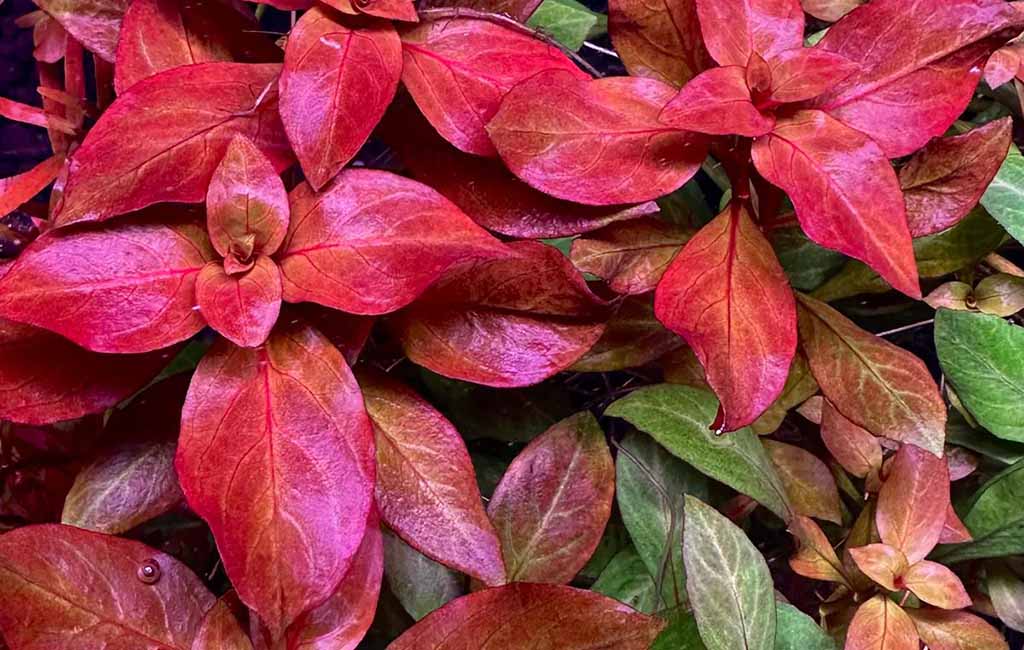
Ludwigia glandulosa aquarium
Care Ludwigia Glandulosa Emersed
Care level varies between emersed and submerged Ludwigia glandulosa in aquafarms. It’s relatively easy to take care of emerging foliage. Here is how to take care of emersed Ludwigia glandulosa.
Substrate and Water
Use a rich nutrient soil, i.e., aquarium soil or a mixture of soil and peat moss. It’ll promote the root system. Ensure that the substrate is constantly moist, but avoid waterlogged conditions.
They can withstand wet and dry cycles as they are amphibious. However, maintain a consistent water level that always remains below the roots, like a marsh. With all this, proper drainage is set to avoid damaging roots.
Light
Light intensity decides the coloration. Provide a medium to high-intensity light for emersed conditions. They can withstand low intensity, but you’ll be unable to get the true Ludwidia’s colors, and it also causes leave shredding. Turn them on for 8 – 10 hours daily. A shorter duration will cause leave shredding.
Humidity
In emersed conditions, they require high humidity. Mianitian has 70% or higher humidity in the tank. You can maintain it by covering the tank or terrarium with a lid or plastic cover. If it’s hard to put a lid on the top, keep the leaves mist with a constant water spray.
Ventilation
If you are growing it in a closed container, set proper ventilation in the tank. It’ll help to avoid mold, mildew, and fungus on the leaves. Using a fan is another option to maintain the aeration of the tank.
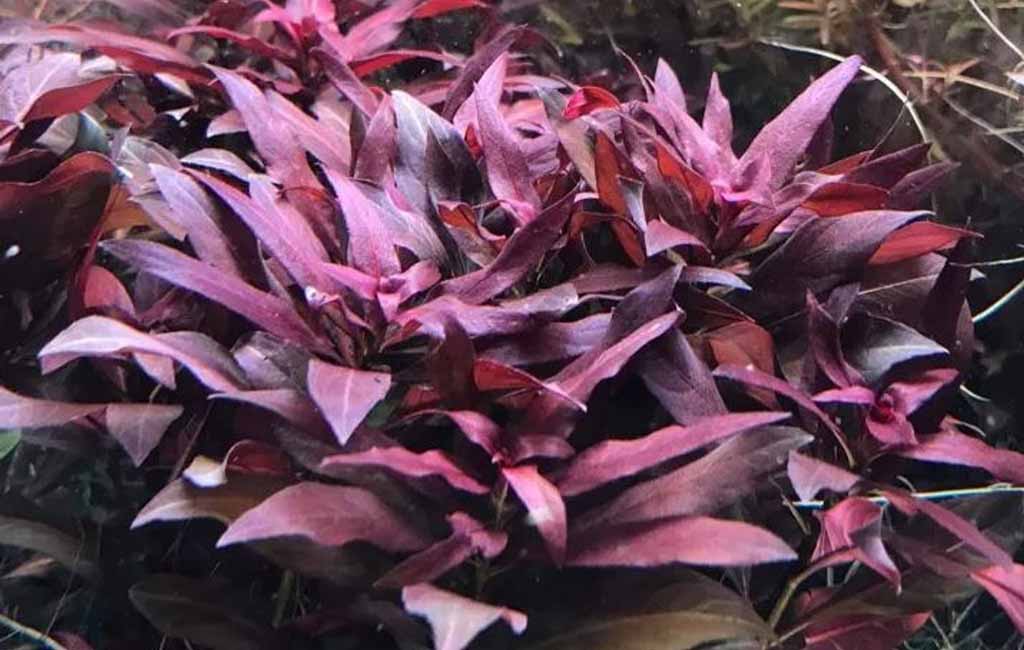
Red Ludwigia Glandulosa
Nutrient’s Application
Ludwigia glandulosa grows well in phosphate—and nitrate-rich soil. Use root tabs or slow-release fertilizers rich in macronutrients to promote lush, colorful plant growth. Applying the fertilizer at the root is highly effective. Apply some iron-rich fertilizer if you observe yellowness in the leaves or lost coloration.
Temperature
Maintain the temperature between 72-82°F. Avoid higher temperatures and temperature fluctuations, as they can harm plant growth.
Keeping in the Shape
They can show you a bushy growth if you trim the long shoots and pale leaves. With that, there’ll be new, compact, and lush growth. They can propagate through their shoots. Therefore, cut healthy shoots and burrow one side in nutrient-rich soil to have new plants.
Acclimation
Properly acclimate the new plant before growing it in the tank. In this way, you’ll not see a stress sign in your plant.
Regular Inspection
Regularly check the water level, humidity, coloration, and other growth parameters. In any out-of-the-box condition, take proper steps to regain optimal health.
Closing Remarks
Amphibious plants can survive in flooded and dry conditions due to their root and leaf plasticity, stomatal regulation, and other factors. Due to its hardiness and coloration, Red Ludwigia glandulosa is an aquarist’s favorite plant. Aquarists use this American beauty in different aquascape ideas, such as contrast, Dutch-style, jungle aquascapes, etc. Emeresed Ludwigia glandulosa requires less care than submerged plants.
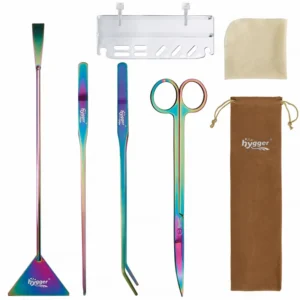
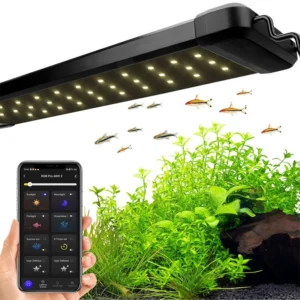
Leave a comment